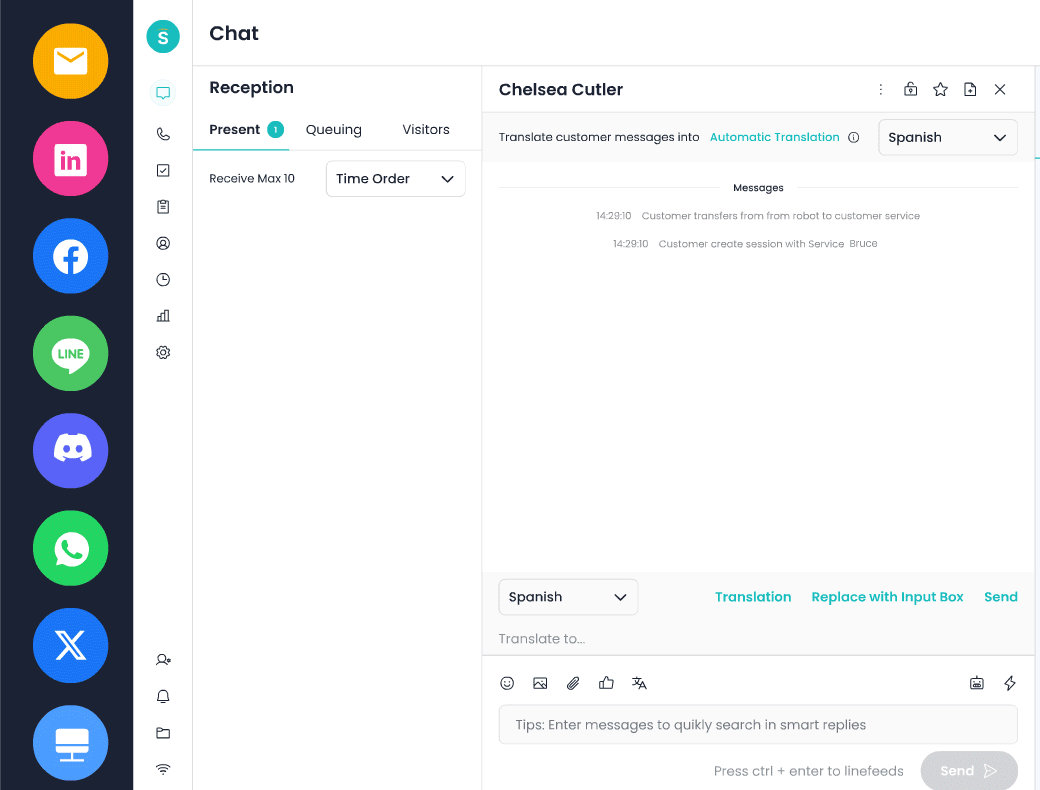A private branch exchange (PBX) system is a great tool for contact centers looking to maximize agent productivity while controlling expenses. A PBX is a private phone network inside a business that connects phones to the public phone network.
Types and Challenges of PBX Systems
There are several kinds of PBXs. The maintenance costs of traditional ones are high, and the expenditure of adding more lines is much higher. Furthermore, when considering how to technically enable contact center operations, it is important to keep in mind the practical needs of call centers that use hybrid or remote workforces.
In a single structure or office, traditional PBX systems enable users to initiate and transfer phone calls. In addition to managing incoming and outgoing calls, these systems also manage external phone lines.
The transition from Centrex to PBX System
Before the introduction of cloud-based PBXs, businesses used central exchange (Centrex) lines, which were invoiced by local service providers for internal communications. Centrex functions similarly to a central telephone exchange in that it consolidates several phone lines into one large communication network. Internal communications became cost-free with PBX systems. The installation and upkeep of them on-site, however, required a significant financial outlay.
Modern Solutions: On-Premise and Cloud-Based VoIP Solutions
Nowadays, the vast majority of enterprises and contact centers that have a phone system either employ an on-premise system or rely on a cloud-based VoIP service. Although both have their benefits, the most practical solution for call centers nowadays is a PBX phone system that is based on VoIP.
Advantages of VoIP PBX Systems for Call Centers and Customer Service
Call center solutions providers often prefer VoIP PBXs that may be easily scaled up or down depending on the user’s needs. Furthermore, these solutions require minimal equipment to maintain, saving both time and money.
A PBX system’s audio quality is perfect for more effective communication, and its capacity to secure client data, record conversations, and enhance customer interactions throughout the whole process is crucial for upholding corporate best practices.
A PBX phone system is advantageous for both businesses and contact centers, as well as for consumers. One of the most important factors in a company’s success in today’s market is giving customers what they want—fast service and good communication—through PBX.
What capabilities do corporate PBX systems provide?
An enterprise PBX offers numerous features that the commercial sector can anticipate. The following are a few examples of renowned ones.
Dialing an extension
A single phone number can be shared by an entire workspace, with each employee receiving a distinct extension. This simplifies the management of calling numbers within the office environment.
Queuing
Call centers must provide queue support to ensure that prospective clients are aware of the anticipated wait time for contact.
Assistance with conferencing. Your PBX system should be capable of accommodating various participants at the same time, as larger office meetings are becoming increasingly popular over the phone.
Call recording
To accumulate data regarding critical communications, it is essential to monitor and analyze call data. For instance, customer care teams get advantages from comprehending the outcomes of their interactions with clients.
Mail Transcription
Several online PBX systems redirect voice messages to an email format for ease of reference.
What advantages does the PBX offer?
- The use of PBX systems streamlines communications, which lowers business costs and gets rid of the need for each employee to have their own phone line.
- The automation of call management by PBX systems enhances overall efficiency and facilitates seamless communication among team members, thereby increasing productivity.
- PBX systems are readily scalable to meet business development by enabling additional lines and extensions.
- PBX systems are equipped with advanced functionalities such as voicemail, group calling, call transfer, and connectivity with other corporate applications.






